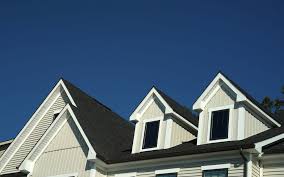Ensuring your new roof’s longevity and optimal performance requires more than just installation; it demands consistent maintenance and care. Neglecting routine upkeep can shorten its lifespan and lead to costly repairs. We will explore practical strategies to maintain your roof, safeguarding your investment and enhancing its durability.
Regular Inspections
Regular inspections from our St. Charles officeare paramount to identifying potential issues before they escalate. Schedule inspections at least twice a year, ideally in spring and fall, to assess the condition of your roof. Look for signs of damage, such as cracked or missing shingles, sagging areas, or debris buildup. Addressing these issues promptly can prevent water leaks and structural damage, prolonging the life of your roof.
Cleaning and Debris Removal
Proper cleaning and debris removal are essential for maintaining roof health. Leaves, branches, and other debris can accumulate in gutters and the roof’s surface, leading to water pooling and potential leaks. Use a soft-bristled broom or leaf blower to safely remove debris without damaging the shingles. Keep gutters clear to ensure proper drainage and prevent water from seeping under the roof’s surface.
Repairing and Replacing Shingles
Over time, shingles can become loose, cracked, or damaged due to exposure to the elements. Inspect shingles regularly and replace any that show signs of wear or damage. Secure loose shingles with roofing nails and replace severely damaged ones to maintain the integrity of your roof. Ignoring damaged shingles can result in water infiltration and structural issues, compromising the overall performance of your roof.
Sealing and Waterproofing
Sealing and waterproofing your roof can significantly enhance its durability and resistance to weather elements. Apply a high-quality roof sealant or waterproof coating as recommended by the manufacturer. Focus on vulnerable areas such as seams, flashing, and vents to create a protective barrier against moisture. This proactive measure can prevent leaks and extend the lifespan of your roof, especially in regions prone to heavy rainfall or snow.
Trimming Overhanging Branches
Overhanging branches can threaten your roof, especially during storms or high winds. Trim back branches that hang over your roof to minimize the risk of falling debris and abrasion from constant contact. This simple maintenance task protects your roof from physical damage and reduces the accumulation of leaves and twigs that can clog gutters and valleys, compromising drainage and causing water damage.
Monitoring Attic Ventilation
A well-ventilated attic plays a crucial role in maintaining the health of your roof and your home’s overall energy efficiency. Insufficient ventilation can lead to moisture buildup, damaged insulation, and encourage mold growth. Monitor attic ventilation regularly, ensuring vents are clear of obstructions and functioning correctly. Proper airflow helps regulate attic temperature, reducing the risk of ice dams in winter and extending the lifespan of your roof’s materials.
Preventing Ice Dams
Ice dams can pose a significant risk to your roof, particularly in colder climates. These occur when snow melts on a warmer roof section, runs down to the colder eaves, and refreezes, forming a dam that prevents proper drainage. This can lead to water backing up under the shingles, causing leaks and potential damage to the roof structure. Ensure your attic is insulated and ventilated to maintain a consistent roof temperature and prevent ice dams. Additionally, consider installing ice and water shield membranes along the eaves and valleys of your roof, which provide an extra layer of protection against ice dam formation.
Professional Roof Inspections
While regular DIY inspections are crucial, hiring a professional roofing contractor for periodic inspections is also advisable. Roofing experts have the experience and knowledge to identify potential issues that may not be visible to the untrained eye. They can conduct thorough inspections, assess the overall condition of your roof, and provide recommendations for necessary repairs or maintenance. Professional inspections are particularly beneficial after severe weather events such as storms or heavy snowfalls, which can cause hidden damage to your roof. Investing in professional inspections can help you catch problems early, ensuring your roof remains in optimal condition for years to come.
Documenting Maintenance Records
Keeping detailed records of your roof maintenance activities is essential for tracking its history and ensuring timely upkeep. Create a maintenance log where you record inspection dates, repairs, and any significant observations. Include invoices or receipts for professional services rendered. This documentation helps you stay organized and serves as valuable information for future reference and potential warranty claims. By maintaining thorough records, you can demonstrate proactive care of your roof, which may be beneficial when selling your home or in case of insurance claims related to roof damage. Regularly updating your maintenance records ensures you stay informed about your roof’s condition and facilitates proactive decision-making.
The longevity and performance of your new roof depend on proactive maintenance and regular inspections. By following these essential tips—conducting regular inspections, cleaning debris, repairing shingles promptly, sealing vulnerable areas, trimming overhanging branches, and monitoring attic ventilation—you can preserve your roof’s integrity and avoid costly repairs. Remember, investing time and effort in roof maintenance will pay off in extended durability and peace of mind for years.
